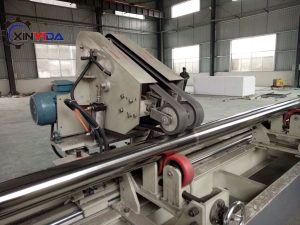Stainless steel polishing is a critical process in various industries, from manufacturing to custom metalwork. Whether you’re looking for a high-gloss finish or something more practical, choosing between manual and automated polishing methods can affect your results, costs, and production times. In this guide, we’ll compare the two approaches based on precision, labor costs, efficiency, and overall finish to help you determine the best option for your needs.
What is Stainless Steel Polishing?
Stainless steel polishing involves the mechanical process of smoothing and enhancing the surface of stainless steel to create a shiny, reflective finish. The polishing process helps remove imperfections, scratches, and oxidation from the surface, ensuring the material looks clean and appealing. This process is crucial for industries like automotive, aerospace, and kitchenware, where both aesthetics and functionality are essential.
Manual Polishing: The Traditional Approach
Manual polishing has been the standard method for many years. It involves polishing stainless steel by hand, typically using polishing wheels, cloths, or abrasive materials.
Pros of Manual Polishing
- Control and Precision: Manual polishing allows for detailed control, making it ideal for custom projects and intricate designs.
- Flexibility: Best for small-scale runs or one-off projects where unique designs are required.
- Cost-Effective for Small Volumes: Since there’s no need for large machines, manual polishing is generally less expensive for small jobs.
Cons of Manual Polishing
- Labor-Intensive: Requires skilled workers and can be tiring, especially for larger volumes.
- Inconsistent Results: The finish may vary depending on the skill of the operator.
- Slower Production Times: Manual polishing is much slower compared to automated methods, limiting efficiency for high-volume production.
Automated Polishing: The Modern Solution
Automated polishing uses machines and robots to polish stainless steel parts with precision. These systems can handle large quantities and are designed for high efficiency.
Pros of Automated Polishing
- Consistency: Automated systems provide consistent results, ensuring each part receives the same level of polishing.
- Speed: Machines can work continuously, polishing parts faster than manual labor.
- Reduced Labor Costs: Once set up, automated systems require minimal human intervention, reducing labor expenses.
Cons of Automated Polishing
- High Initial Investment: The cost of automated machinery can be significant, especially for small businesses.
- Limited Flexibility: These systems work best for high-volume, repetitive tasks and may not be suitable for highly customized work.
- Maintenance Requirements: Automated systems require regular maintenance to ensure they continue to function effectively.
Labor Costs: A Key Comparison Factor
One of the most significant differences between manual and automated polishing is labor costs.
- Manual Polishing: Requires skilled labor, which can be expensive depending on the complexity and volume of the job. However, it’s more cost-effective for smaller runs where automated systems would be impractical.
- Automated Polishing: While automated systems have a high upfront cost, they typically lower labor costs in the long term by reducing the number of workers needed and speeding up the process.
For high-volume production, automated polishing machine can save significantly on labor costs, while manual polishing is more affordable for smaller batches or specialized tasks.
Precision and Quality: Which Method Wins?
Both manual and automated polishing offer excellent precision and quality, but the outcomes depend on the complexity of the project.
- Manual Polishing: The skill of the operator plays a significant role. When done well, manual polishing can result in highly precise finishes, especially for custom designs and small parts.
- Automated Polishing: Machines ensure uniformity and consistent results, especially in high-volume production. While they may not match the delicate touch of skilled workers, automated systems can achieve remarkable precision and quality over long production runs.
Time Efficiency: How Fast Can You Finish?
Time efficiency is another key consideration when comparing manual and automated polishing.
- Manual Polishing: The process is more time-consuming due to the hands-on nature of the work. It can take much longer to polish large volumes of stainless steel, making it less ideal for time-sensitive projects.
- Automated Polishing: Automated systems can run continuously, polishing large quantities in less time. With minimal human intervention, these systems can increase throughput and reduce production cycles.
For businesses that require fast turnaround times and large volumes of polished parts, automated polishing is the clear winner.
Which Method is Best for Your Business?
The best polishing method depends on your business’s specific needs. If you’re a small manufacturer or a company dealing with bespoke, one-off designs, manual polishing might be the right choice. However, if you’re involved in large-scale production or require consistent, high-quality finishes with faster turnaround times, automated polishing will be more beneficial.
Manual vs. Automated Stainless Steel Polishing
In conclusion, both manual and automated stainless steel polishing methods have their place in the industry. Manual polishing offers precision, flexibility, and cost-effectiveness for small jobs, while automated polishing excels in speed, consistency, and reducing labor costs for larger operations.
To choose the best method, consider your volume of work, required finish, and available budget. By weighing the pros and cons, you can make an informed decision that suits your business needs.
FAQs:
Q: What is the main difference between manual and automated stainless steel polishing?
A: The main difference lies in labor and efficiency. Manual polishing allows for precision and flexibility, while automated polishing offers consistency, speed, and reduced labor costs.

